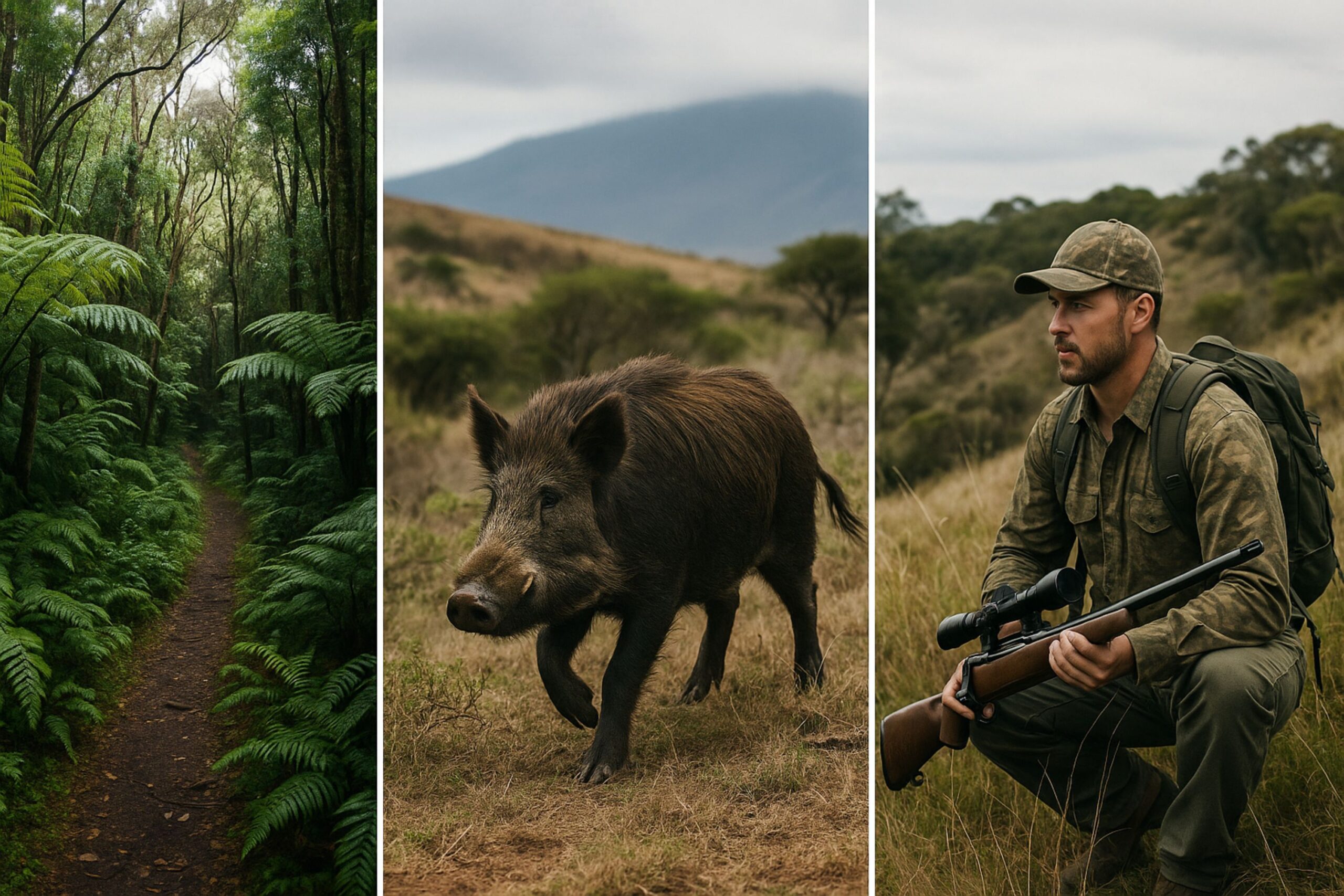When you picture Hawaii, your mind likely fills with images of sun-kissed beaches, turquoise waves, and vibrant hula dancers. But beyond the resorts lies a deep, complex, and breathtakingly beautiful natural world—one that is facing a silent crisis. Invasive species are ravaging native ecosystems, and in this unique battle, an unexpected group has emerged as a key guardian: the sustainable hunter.
Hunting in Hawaii isn’t about trophies; it’s about balance. It’s a practice deeply rooted in cultural history and modern conservation science, working to protect the very soul of the islands.
The Hawaiian Paradox: Why Hunting is Necessary for Conservation

The ecological story of Hawaii is one of both wonder and tragedy. For millennia, these isolated islands developed a unique suite of flora and fauna found nowhere else on Earth. With no large mammalian predators, native species like the iconic Nēnē (Hawaiian goose), the curious ‘Io (Hawaiian hawk), and countless forest birds evolved in peaceful isolation.
This delicate balance was shattered with the arrival of humans and the non-native species they brought. Pigs, goats, deer, and mouflon sheep, introduced for food and sport, became ecological nightmares. Axis Deer Hunting in Hawaii has gained attention because axis deer populations in particular pose a serious threat to native ecosystems.
Feral Pigs: They root through the forest floor like rototillers, destroying native plants, facilitating erosion, and creating mud wallows that are perfect breeding grounds for mosquitoes that carry avian malaria—a primary driver of native bird extinction.
Ungulates (Deer, Goats, Sheep): These animals overgraze vegetation, preventing forest regeneration and stripping the land, which leads to devastating siltation of coral reefs.
Without natural predators, these invasive populations explode. This is where regulated, sustainable hunting becomes a critical tool for land management.
Pono Hunting: The Principles of Sustainability
The Hawaiian concept of pono—meaning rightness, balance, and responsibility—perfectly encapsulates the ethos of sustainable hunting. It’s a practice guided by science, respect, and a long-term vision.
Key principles include:
1. Science-Based Management: The Hawaii Department of Land and Natural Resources (DLNR) Division of Forestry and Wildlife (DOFAW) sets strict hunting seasons, bag limits, and specific hunting units based on rigorous population surveys. The goal isn’t eradication in all cases, but population control to a level the ecosystem can sustain.
2. Targeting Invasive Species: The primary focus of conservation hunting is on non-native, invasive ungulates and game birds. By reducing these populations, hunters directly reduce the pressure on native habitats, allowing them to recover.
3. Utilizing the Harvest: Taking a life for mere sport is contrary to this philosophy. Hunters are encouraged to use the meat—opae (wild meat)—to feed their `ohana (family). This connects people to their food source in a profound way and reduces waste.
4. Respect for the `Āina (Land): Ethical hunters are often the eyes and ears on the ground. They report illegal activity, monitor wildlife health, and contribute to trail maintenance. They practice Leave No Trace principles, ensuring the wilderness remains pristine.
The Hunter as Conservationist: Success Stories
This model is already yielding tangible results across the islands:
- The Watershed Partnerships: These alliances of private landowners, public agencies, and hunters are vital. On Molokai, for instance, coordinated efforts to control feral deer and pigs are helping to protect the island’s pristine watersheds and the native species within them.
- Protecting the Palila: On the Big Island, the endangered Palila bird relies on the māmane tree for survival. Feral sheep and goats were destroying māmane forests. Controlled hunting of these invasives has been a cornerstone of the efforts to bring the Palila back from the brink of extinction.
A Bridge to Cultural Heritage
For many Native Hawaiians, hunting is a way to reconnect with ancestral practices. While the tools have changed, the intention remains: to be a part of the natural cycle, to gather food responsibly, and to act as a steward of the `āina. It fosters a deep, personal investment in the health of the land that cannot be replicated.
Similar Link: Bowhunting vs. Rifle Hunting: The Best Method for Axis Deer in Hawaii
How You Can Support the Balance
Even if you never pick up a rifle, you can support these conservation efforts:
- Educate Yourself and Others: Share articles like this one to dispel the myth that all hunting is destructive. Understanding its role in Hawaii is key.
- Support Local Conservation: Donate to or volunteer with organizations like the Hawaii Wildlife Fund or your local Watershed Partnership.
- Respect Regulations: If you know a hunter, encourage them to always follow DLNR rules and report poachers. Legal, ethical hunting is the only kind that benefits the ecosystem.
- Choose Local, Sustainable Food: By understanding where your food comes from, you appreciate the value of hunters who source their own wild meat responsibly.
Conclusion: A Shared Future for Hawaii’s Wild Places
The path forward for Hawaii’s fragile ecosystems requires a multi-faceted approach. Sustainable hunting is not a silver bullet, but it is an essential and powerful tool. It’s a practice built on a profound respect for life—for the native species fighting for survival, for the `āina that sustains them all, and for the cultural traditions that teach us how to live in balance. Many hunting outfitters in Hawaii also play an important role by guiding responsible hunts that support conservation goals and educate visitors on the significance of stewardship.
The next time you hike through a lush Hawaiian forest or hear the call of a native bird, remember the quiet, dedicated stewards working to ensure those sounds and sights remain for generations to come.






